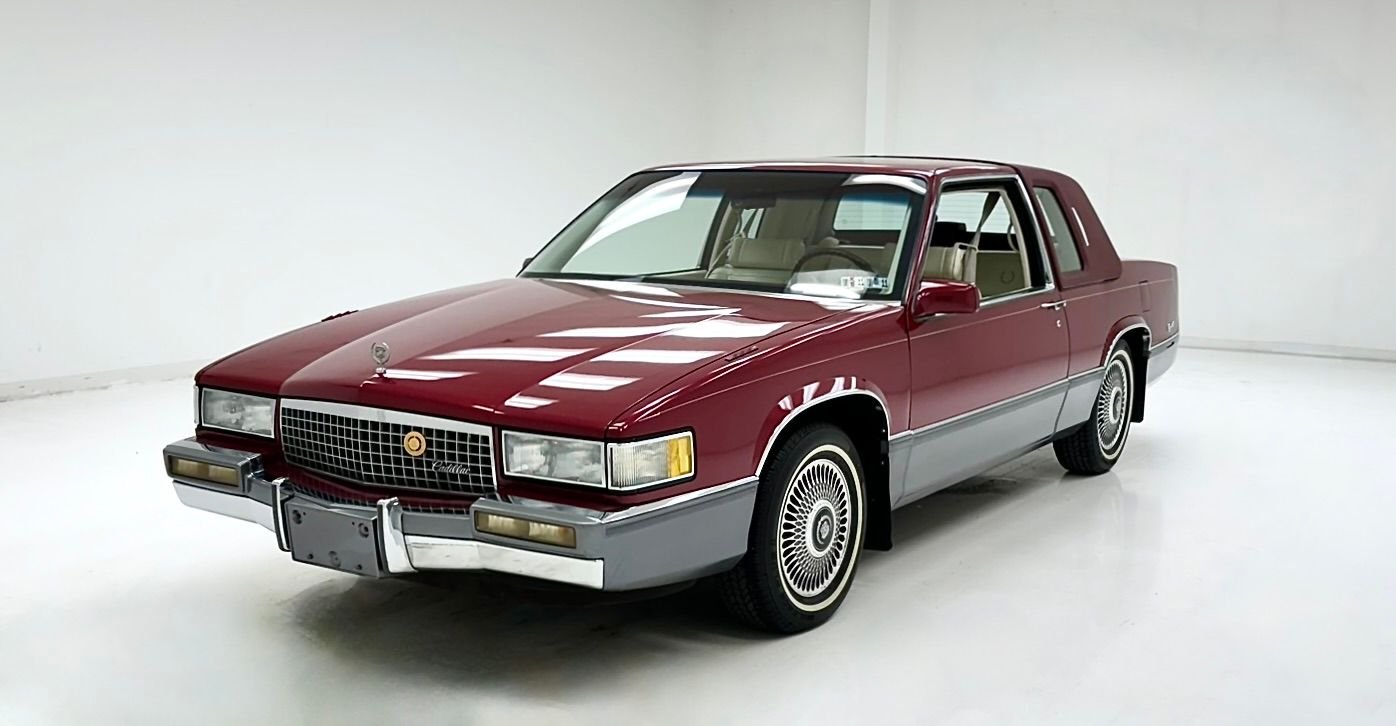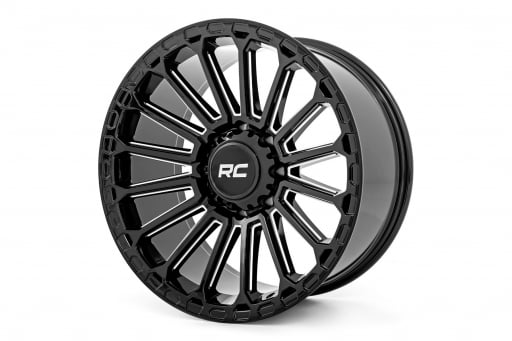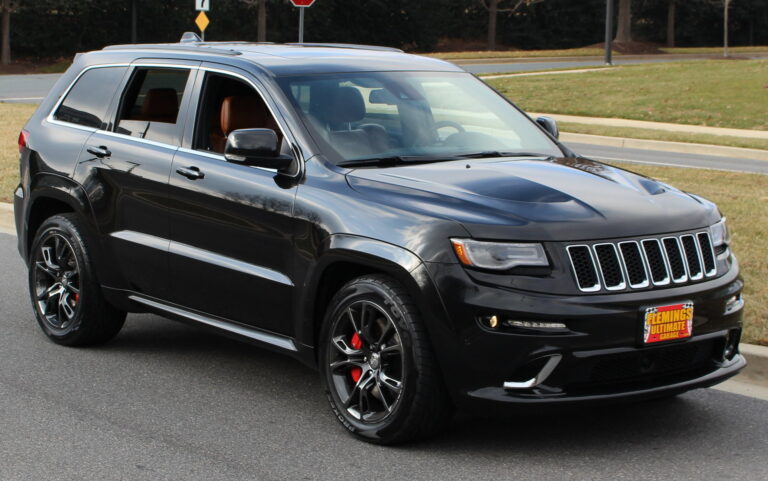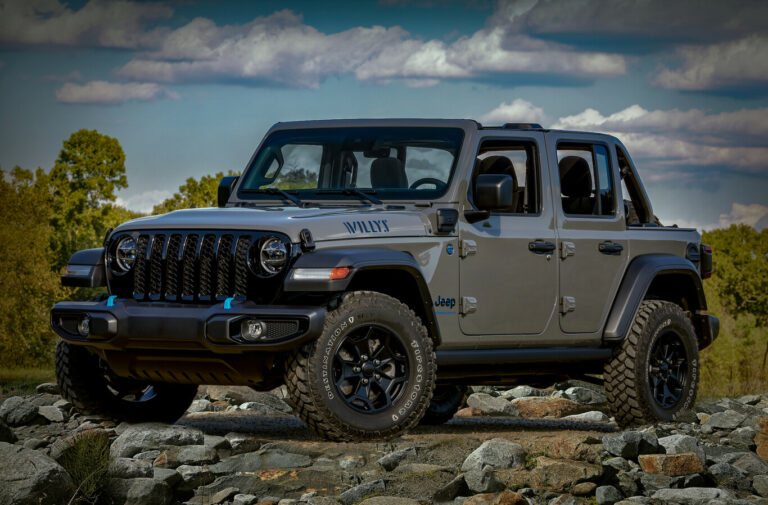1990 Jeep Wagoneer For Sale: A Comprehensive Buyer’s Guide
1990 Jeep Wagoneer For Sale: A Comprehensive Buyer’s Guide /jeeps.truckstrend.com
The 1990 Jeep Grand Wagoneer isn’t just a vehicle; it’s an automotive legend, a rolling piece of Americana that effortlessly blends rugged utility with an undeniable sense of vintage luxury. As the sun began to set on the original SJ platform, the 1990 model year represented one of the final iterations of this iconic SUV, offering a unique blend of classic styling, a robust V8 engine, and an interior that defined "upscale" for its era. For enthusiasts and collectors alike, finding a 1990 Jeep Wagoneer for sale today is more than just a transaction; it’s an opportunity to own a piece of history, a vehicle that commands attention and evokes a sense of timeless adventure. This comprehensive guide will delve into everything you need to know about acquiring one of these magnificent machines.
The Enduring Appeal of the 1990 Grand Wagoneer
1990 Jeep Wagoneer For Sale: A Comprehensive Buyer’s Guide
Born from a design that first debuted in 1963, the Jeep Wagoneer evolved over decades, culminating in the "Grand Wagoneer" moniker that signified its top-tier status. By 1990, it had become a symbol of affluent practicality, equally at home at the country club or navigating a muddy back road. Its enduring appeal lies in its distinctive character: the iconic faux wood-grain paneling, the imposing chrome grille, and a surprisingly luxurious interior for a vehicle of its type.
What makes the 1990 model year particularly noteworthy for those seeking a Wagoneer for sale is its position as one of the last full production years before the final 1991 run. It retains the classic carbureted AMC 360 V8, a testament to its old-school American muscle, paired with the reliable Selec-Trac four-wheel-drive system. This combination ensures a driving experience unlike anything modern, characterized by a commanding view of the road, a comfortable ride, and a mechanical simplicity that appeals to those who appreciate a more hands-on approach to vehicle ownership. It’s not just a car; it’s a lifestyle statement, a conversation starter, and for many, a nostalgic journey back to a simpler time.
Key Features and Specifications of the 1990 Grand Wagoneer
Understanding the specific attributes of the 1990 model is crucial when evaluating a Wagoneer for sale.
- Engine: The heart of the 1990 Grand Wagoneer is the robust AMC 360 cubic-inch (5.9L) V8 engine. This carbureted powerplant, while not known for its fuel efficiency, delivers ample torque and a satisfying rumble, providing reliable power for both highway cruising and light off-road excursions. It’s a relatively simple engine, making it approachable for maintenance and repair by those with mechanical aptitude.
- Transmission: Power is routed through a durable Chrysler Torqueflite A727 3-speed automatic transmission, renowned for its strength and longevity.
- Four-Wheel-Drive System: The 1990 model features the Selec-Trac (NP229) transfer case, offering both full-time 4WD for varied road conditions and a selectable part-time 4WD mode with a low range for more challenging off-road scenarios.
- Exterior: The unmistakable silhouette is defined by its boxy shape, prominent chrome grille, and the signature simulated wood-grain vinyl paneling along the sides. Chrome bumpers, roof rack, and aluminum wheels complete the classic aesthetic.
- Interior: Step inside, and you’re greeted by a spacious cabin typically appointed with leather or vinyl upholstery, often in desirable colors like tan or burgundy. Standard features included power windows, power locks, power seats, air conditioning, cruise control, and an AM/FM cassette stereo. The dashboard features classic analog gauges and a commanding, upright driving position.
- Dimensions & Towing: With a wheelbase of 109.9 inches and a curb weight around 4,500 pounds, the Grand Wagoneer is a substantial vehicle. It boasts a respectable towing capacity of approximately 5,000 pounds, making it capable of hauling boats or small trailers.

Why Buy a 1990 Grand Wagoneer Today?

The decision to purchase a 1990 Jeep Grand Wagoneer for sale extends beyond mere transportation.
- Classic Car Status & Appreciation: Well-maintained Grand Wagoneers, particularly the later models, have seen a significant rise in value over the past decade. They are increasingly sought after by collectors, making them a potential appreciating asset.
- Unique Driving Experience: In an era of homogenous modern SUVs, the Wagoneer offers a distinct, analog driving feel. It’s a vehicle that connects you to the road and demands attention, delivering a sense of nostalgia and character unmatched by contemporary vehicles.
- Practicality: Despite its age, the Grand Wagoneer remains a highly practical SUV. It offers generous cargo space, comfortable seating for five, and genuine four-wheel-drive capability for inclement weather or light off-road adventures.
- Strong Community & Aftermarket Support: A passionate community of Grand Wagoneer owners exists, offering a wealth of knowledge, advice, and camaraderie. Furthermore, there’s excellent aftermarket support for parts, making repairs and restorations feasible.
- Relatively Simple Mechanics: Compared to modern, computer-controlled vehicles, the 1990 Grand Wagoneer’s mechanical systems are straightforward. This can make DIY maintenance and repairs more accessible for the enthusiast.
- Lifestyle Statement: Owning a Grand Wagoneer is more than just having a vehicle; it’s embracing a particular style and attitude. It’s a head-turner, a conversation starter, and a vehicle that truly reflects a love for classic American automotive design.
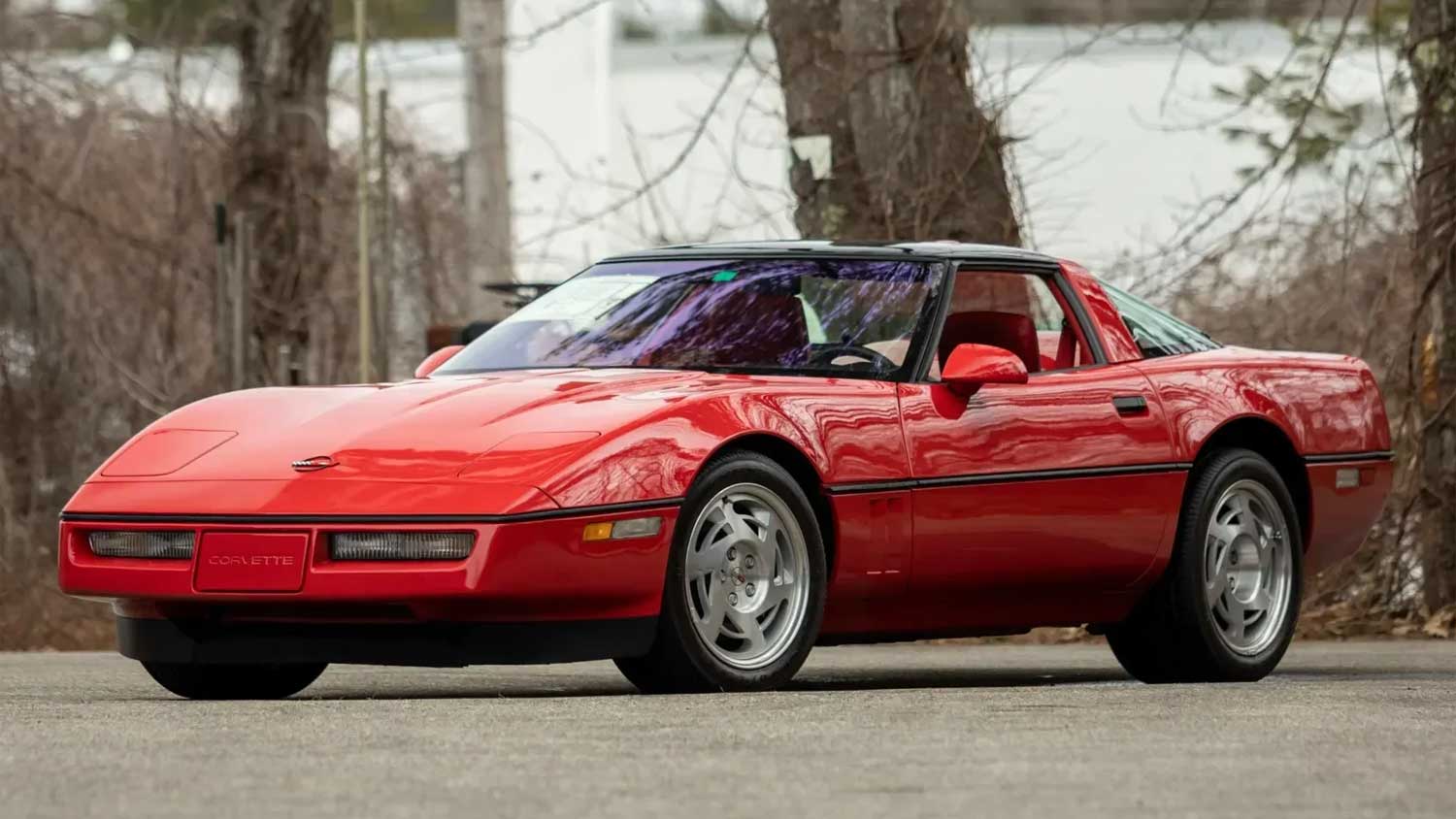
What to Look For When Buying a 1990 Grand Wagoneer (Important Considerations)
When you find a 1990 Jeep Wagoneer for sale, a thorough inspection is paramount. These vehicles are over 30 years old, and condition varies wildly.
- Rust, Rust, Rust: This is the Grand Wagoneer’s Achilles’ heel. Inspect everywhere:
- Body Panels: Fenders, quarter panels, rocker panels, lower door sills, and around the windows. Pay close attention to the area under the wood-grain trim, as moisture can get trapped there.
- Tailgate: The power rear window mechanism and the tailgate itself are notorious rust points.
- Frame: Check the frame rails, especially near the front and rear axles, and where suspension components attach.
- Floorboards: Inspect from both inside and underneath.
- Engine (AMC 360 V8):
- Leaks: Look for oil leaks (rear main seal, valve covers, oil pan) and coolant leaks.
- Carburetor: Check for rough idle, hesitation, or stalling, which could indicate a worn or poorly tuned carburetor.
- Smoke: Blue smoke indicates oil burning; white smoke suggests coolant.
- Listen: Any knocking, ticking, or excessive valvetrain noise should be a red flag.
- Transmission & Transfer Case:
- Shifting: Test all gears. Shifts should be smooth, not harsh or delayed.
- 4WD Engagement: Ensure the Selec-Trac system engages properly in both full-time and part-time modes, and that the low range works. Check for fluid leaks.
- Suspension & Steering:
- Ride Height: Sagging leaf springs are common.
- Steering Play: Excessive play in the steering wheel often indicates worn steering box, tie rod ends, or ball joints.
- Shocks & Bushings: Check for worn shocks and rubber bushings (control arm, sway bar).
- Brakes: Check for spongy pedal, pulling to one side, or excessive noise. Inspect lines for corrosion.
- Electrical System: Grand Wagoneers are known for electrical quirks. Test everything: power windows, power locks, power seats, gauges, lights, radio, and especially the air conditioning system. The power rear window is a common failure point.
- Interior Condition:
- Upholstery: Leather seats often show cracks and wear.
- Headliner: Sagging headliners are almost guaranteed.
- Dashboard: Look for cracks, especially around the speaker grilles.
- Wood Trim: Inspect the interior wood trim for fading or damage.
- Maintenance Records: A stack of service records is invaluable, indicating how well the vehicle has been cared for.
- Test Drive: Always perform a thorough test drive. Listen for unusual noises, check acceleration, braking, and how it handles bumps and corners.
Practical Advice: A pre-purchase inspection (PPI) by a mechanic familiar with vintage Jeeps or classic cars is highly recommended. It can uncover hidden issues and provide a realistic assessment of the vehicle’s true condition and potential future costs.
Common Challenges and Solutions
Owning a 1990 Grand Wagoneer is rewarding, but it comes with a few predictable challenges:
- Fuel Economy: Expect single-digit to low-double-digit MPG (typically 8-12 MPG).
- Solution: Accept it as part of the classic car experience. Regular tune-ups can optimize efficiency, but don’t expect miracles. EFI conversions are an option but costly.
- Rust Management: Rust is an ongoing battle.
- Solution: Address any rust immediately. Proper rustproofing and diligent washing, especially in salt-prone areas, are crucial.
- Carburetor Tuning: The AMC 360’s carburetor can be finicky.
- Solution: A good carburetor rebuild or replacement can vastly improve performance. Many owners opt for modern electronic fuel injection (EFI) conversion kits for vastly improved starting, reliability, and minor MPG gains.
- Electrical Gremlins: Aging wiring and components can lead to intermittent electrical issues.
- Solution: Patience, a good wiring diagram, and a multimeter are your friends. Many components are replaceable, and the community offers specific troubleshooting guides.
- Parts Availability: While mechanical parts are generally plentiful, specific interior trim, exterior wood-grain panels, or unique electrical components can be rare and expensive.
- Solution: Utilize specialist suppliers (e.g., BJ’s Off-Road, Team Grand Wagoneer), online forums, and salvage yards.
Tips for a Successful Purchase
- Set a Realistic Budget: Factor in not just the purchase price, but also immediate maintenance, repairs, and potential upgrades. A "cheap" Wagoneer can quickly become a money pit if it needs extensive work.
- Be Patient: Finding a truly well-preserved or properly restored 1990 Grand Wagoneer for sale takes time. Don’t rush into a purchase.
- Join the Community: Online forums (e.g., wagoneerworld.com, IFSJA.org) and Facebook groups are invaluable resources for advice, tips, and even leads on vehicles for sale.
- Determine Your Goal: Are you looking for a daily driver, a weekend cruiser, or a full restoration project? Your answer will dictate the condition of the vehicle you should pursue.
- Don’t Be Afraid to Walk Away: If something feels off, or the seller is evasive, it’s better to miss out on one vehicle than to buy a problem.
1990 Jeep Grand Wagoneer Estimated Price Guide
The market for 1990 Jeep Grand Wagoneers is dynamic, with prices heavily dependent on condition, originality, and recent maintenance. Here’s a general guide:
| Condition Category | Price Range (USD) | Key Characteristics | Expected Work |
|---|---|---|---|
| Project/Parts | $3,000 – $8,000 | Significant rust, non-running or poorly running engine/transmission, major electrical issues, dilapidated interior. | Full frame-off or extensive body repair, engine/transmission rebuild, complete interior overhaul, significant electrical work. For experienced restorers only. |
| Driver Quality | $10,000 – $25,000 | Runs and drives, functional but with noticeable flaws (some rust, worn interior, non-functioning AC, minor leaks). May need immediate maintenance and deferred repairs. | Rust remediation, interior refresh (headliner, seat repair), AC system repair, suspension work, tune-up, fluid changes. Good for a functional classic that needs ongoing love. |
| Good Condition | $30,000 – $45,000 | Minimal surface rust (if any), solid mechanicals, presentable interior with minor wear, all major systems (AC, power windows) functional. May have been partially restored or well-cared for. | Minor cosmetic touch-ups, routine maintenance, possibly addressing some small electrical quirks. Ready to enjoy with confidence, but not concourse perfect. |
| Excellent/Restored | $45,000 – $75,000+ | Near-show quality, minimal to no rust, fully restored or meticulously maintained mechanicals, flawless paint and wood-grain, fully functional and refreshed interior. Concours contenders. | Minimal ongoing maintenance; may require careful upkeep to preserve condition. These are often professional restorations or extremely low-mileage, pampered originals. |
Note: Prices can fluctuate based on location, originality, documentation, and specific market demand. Exceptionally rare, low-mileage, or celebrity-owned examples can command significantly higher prices.
Frequently Asked Questions (FAQ)
Q: Is a 1990 Grand Wagoneer reliable as a daily driver?
A: It can be, but with caveats. If well-maintained and properly sorted, it can be a unique daily driver. However, expect lower fuel economy, more frequent maintenance needs than a modern vehicle, and the occasional classic car quirk. It’s best suited for someone who enjoys the classic car experience and is prepared for it.
Q: What kind of fuel economy can I expect?
A: Typically between 8 and 12 miles per gallon (MPG). This is largely due to its V8 engine, automatic transmission, weight, and less aerodynamic design compared to modern vehicles.
Q: Are parts hard to find for a 1990 Grand Wagoneer?
A: For most mechanical components (engine, transmission, drivetrain, suspension), parts are generally available through specialist suppliers and auto parts stores. However, specific interior trim pieces, exterior wood-grain paneling, and some electrical components can be rare and expensive to source.
Q: What are the most common issues to look out for?
A: Rust (especially in rocker panels, tailgate, and frame), electrical problems (power windows, AC, gauges), carburetor issues, and worn suspension components are the most frequently reported problems.
Q: How much does it cost to maintain a Grand Wagoneer?
A: This varies wildly. If you buy a well-maintained example and do some DIY, costs might be moderate. If you buy a project, prepare for significant investment in parts and labor. Budget for routine maintenance (oil changes, tune-ups), and a "contingency fund" for unexpected repairs.
Q: Can I upgrade a 1990 Grand Wagoneer with modern features?
A: Yes! Popular upgrades include electronic fuel injection (EFI) conversions for better reliability and efficiency, modern audio systems, LED lighting, and suspension lift kits for improved off-road capability or aesthetics.
Conclusion
The 1990 Jeep Grand Wagoneer remains a captivating and sought-after classic SUV. Its unique blend of vintage charm, rugged capability, and surprising luxury sets it apart in the automotive landscape. For those looking to buy a 1990 Jeep Wagoneer for sale, the journey is as much about passion as it is about practicality. By understanding its strengths, common pitfalls, and the market value, you can make an informed decision and embark on a rewarding ownership experience. Owning a Grand Wagoneer is more than just driving a car; it’s driving a piece of history, an icon that continues to turn heads and inspire adventure wherever it roams.

